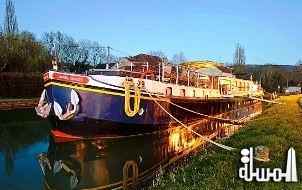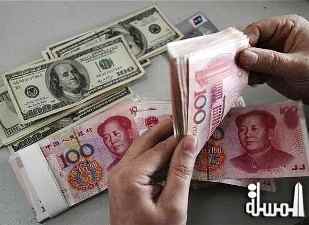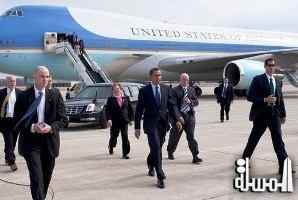
New technologies and different travel behaviours are game changers for travel in APAC
Almasalla Travel News- The rapid use of mobile devices (smartphones, tablets) and social media among consumers in Asia Pacific (APAC) as well as rising demand in cruise holidays and high speed rail travel, has seen the region leapfrog existing behaviours in the adoption of newer technologies and infrastructure.
High speed rail (HSR), 4G networks and port upgrade/builds in the region will also enable APAC to leapfrog traditional behaviours elsewhere.
This “Leapfrog Effect” as outlined in Amadeus’ report, Shaping the future of travel in Asia Pacific -The big FOUR travel effects, will give consumers new ways to manage their travel experience and change the way they behave in the coming years to 2030. At the same time, it will provide new opportunities for travel providers.
The report revealed travellers are increasingly using social media as a key tool in the overall travel experience. While these trends will not destroy the established services provided by travel agents, they will force changes in the way these service providers interact with their customers, such as allowing mobile transactions or transactions through social media sites. By 2030 social media usage will become an important aspect of the overall travel experience.
.gif) david Brett, president of Amadeus Asia Pacific (pictured below right), sees face-to-face and online travel merging, as “the line between online and personal contact from travel agencies for travellers will become more and more blurred”.
david Brett, president of Amadeus Asia Pacific (pictured below right), sees face-to-face and online travel merging, as “the line between online and personal contact from travel agencies for travellers will become more and more blurred”.
Singapore, Korea and Australia top the list of countries where the majority of their populations have moved from standard mobile phones to smartphones. In emerging markets, such as China, India and Indonesia, smartphone and tablet usage is also growing rapidly. This trend means countries can bypass the fixed line stage of internet development and leapfrog straight to use of the mobile internet.
With 3G networks now rolled out across the region, and some countries already offering 4G networks, mobile devices are increasingly being used as part of the overall travel experience.
Amadeus survey showed 40% of business travellers now use mobile devices for travel-related arrangements and bookings, with the usage especially high in China, India, Indonesia and Korea. Leisure travellers account for 25%.
India seeing the most leapfrogging
Brett noted that India is showing the most leapfrogging in terms of technology. “India is at the forefront of mobile and social media use in Asia Pacific. An overwhelming majority of the Indian market have literally leapfrogged the use of fixed internet, straight to mobile via a smartphone. This is helping to broaden people’s access to travel information, but it couldn’t have happened if the smartphone revolution didn’t happen at the same time.”
He added that according to the report, 43% of Indian business travellers and 15% of leisure travellers use smartphones during the planning, booking or managing travel arrangements, he added.
“For business travellers this is among the highest in the Asia Pacific region. For example, according to MakeMyTrip, (India’s leading online travel company and an Amadeus customer), 10% of their bookings are now through a mobile device, with more growth expected. The report also shows that 48% of Indian travellers frequently use social media during travel and 58% intend to so in the future.”
Brett forecast mobile would change the future of travel in APAC. “Mobile is a game changer for travel. The travel industry is already rethinking its strategies to make use of mobile. Those that aren’t, will be left behind.”
While technology, specifically mobile, provides greater flexibility for consumers they also pose a challenge for travel service providers – how to stay relevant to the mobile device savvy traveller.
Cruise on the rise
Demand for cruise holidays among APAC travellers is on the rise. Countries in the region are waking up to the opportunity as an emerging middle-class aspires to take all-inclusive cruise holidays for one to two weeks and visit multiple destinations.
Millennials (Gen Y) are also showing strong interest in cruise vacations, once the preserve of the older generation. Cruise thus represents a real market opportunity for travel agents across the region, to fill the gap created by the trend to self-manage travel.
Rail and inter-modal travel to change the way people live and work
In the area of high speed rail (HSR) infrastructure, regional governments are making enormous investment in this sector. In fact, the region has leapfrogged Europe and has exceeded the latter’s 10,000-kilometre network, as well as in North America where a comparable network is yet to be developed.
Japan, China and Korea have led the way in Asia Pacific. The latest to come on board are Malaysia and Singapore in February (2013) when they inked a deal to build a high-speed rail link between the city state and Kuala Lumpur. Scheduled to be completed by 2020, the proposed link will cut travel time between the two capitals to just 90 minutes. Currently, travel time between the two capitals is five hours of driving and seven hours by rail.
Similar networks are now being planned or considered in India, Australia and Indonesia with almost 50,000 kilometres of network feasible by 2030.
Brett said APAC has the opportunity to learn from processes and technologies in other parts of the world, particularly through the growth of ‘intermodal’ travel.
“By this we mean using two or more modes of transportation in a journey. So you might start the journey with a plane and connect to rail. In Europe, we have seen the growth of high speed rail (HSR) replace some airline routes, this is particularly popular in China, the Shanghai – Beijing route, for example or in Taiwan from Taipei to Kaoching. I believe we will be seeing a lot more of this in the future.”
Personally Brett would love to see more ASEAN markets connected via high speed rail. “As intra-Asian business increases, so does the need for travel options. Imagine being able to get on a train in Thailand and be in Cambodia in an hour? I believe this would change business travel in the region, but there is a lot of infrastructure needed to make it happen.”
Source: web in travel







